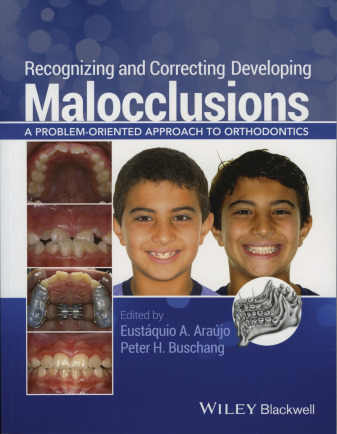
This textbook deals pragmatically with mixed dentition treatment, looks squarely at 2 phases of treatment, and helps the reader to understand what can be done. Nine authors from around the world contributed chapters to this book, and it is destined to become a classic because of each author’s reasoned approach and copious reference section. Recent studies from North Carolina and Florida suggest that there are few indications for early, phase 1 treatment; this book questions and counters that message.
Do not let the soft-cover feel deceive you; this book is anything but lightweight, thanks to insights from both a clinician’s clinician and a researcher’s researcher. The organizational structure of the book is engaging and clear, enabling the reader to maintain a sense of place both within a chapter and within the book. The color photographs and illustrations are vivid and true to life, and clinical pictures abound.
Both sides of controversial questions are addressed. Clinical opinions are professionally discussed and illustrated, and key treatment concepts are highlighted and appropriately referenced.
Only master clinicians such as Dr Araújo and company could have seen the thousands of patients required to be able to select such a comprehensive, straightforward, and crystal-clear set of clinical records with which to illustrate the treatment principles explained. Coupled with that clinical expertise are Dr Buschang’s Aristotelian tour-de-force explanations, in which he juggled the literature references of how jaws grow and teeth come together; the research piece is clearly written and comprehensive.
All chapters have clinical records, and those in chapters 5, 6, and 7 are especially good: immaculate, complete, in extremely clear color, and accompanied by brief, well-documented clinical notes. In the chapters dealing with Class I, Class II, and Class III mixed dentitions, Dr Buschang organized the problems, and Dr Araújo presented solutions—hence the problem-oriented approach of the title. Clinical pearls abound. Don’t miss Dr Araújo’s approach to “beat the thumb” in chapter 8 about habits.
Mere quibbling suggestions for the second edition include making the font size larger and realizing that spell checkers still need a painstaking proofreader. Quibbles aside, this is a very fine first edition. The index is good, and an e-book version is available. Orthodontic practitioners with at least some experience will find meaningful content here, as will teachers and researchers.
Some books should be glanced at, some read partially, others chewed and digested. This book will make a complete meal. Make that many meals.
Stay updated, free dental videos. Join our Telegram channel

VIDEdental - Online dental courses


